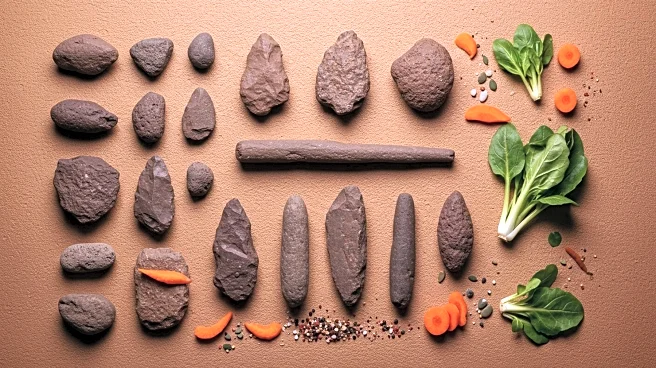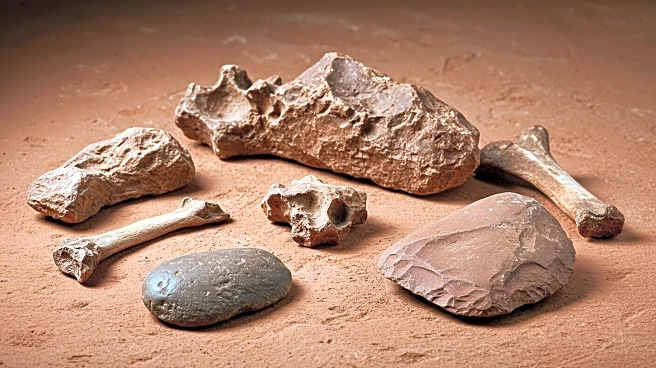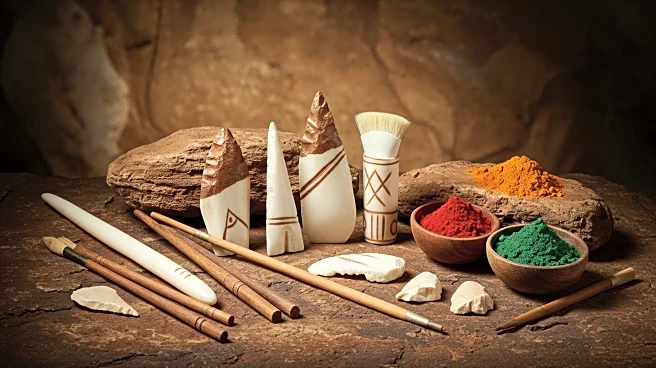What's Happening?
A recent study published in the journal Science has uncovered evidence that ancient humans, dating back 300,000 years, utilized wooden tools for processing vegetables. These tools were discovered in Southwest China and suggest that early humans had a more balanced diet than previously thought, including various vegetables alongside meat. The tools, found at the Early Paleolithic site in Gantangqing, China, were remarkably preserved due to the site's unique environmental conditions. The study, led by Xing Gao from the Institute of Vertebrate Paleontology and Paleoanthropology at the Chinese Academy of Sciences, indicates that these tools were used to dig up underground tubers, as evidenced by starch grains found on the implements.
Why It's Important?
This discovery challenges the long-held notion that ancient human diets were predominantly meat-based. It highlights the adaptability and resourcefulness of early humans in exploiting plant resources for survival. Understanding the dietary habits of ancient humans provides insights into their social and environmental interactions, as well as their survival strategies. The study also emphasizes the importance of plant-based foods in human evolution, suggesting that early humans had knowledge of seasonal food availability and safe consumption practices. This broader understanding of ancient diets can influence current perspectives on human nutrition and dietary evolution.
What's Next?
Further research may focus on exploring other archaeological sites for similar tools to confirm the widespread use of plant processing among ancient humans. Scientists might also investigate the specific types of plants processed and consumed, which could offer deeper insights into the ecological and cultural practices of early human societies. Additionally, this study could prompt a reevaluation of existing theories regarding human evolution and dietary habits, potentially influencing modern dietary recommendations.
Beyond the Headlines
The preservation of these wooden tools opens new avenues for understanding the environmental conditions that allowed organic materials to survive for hundreds of thousands of years. This could lead to advancements in archaeological methods and techniques for studying ancient artifacts. Moreover, the study underscores the importance of interdisciplinary approaches in archaeology, combining paleontology, botany, and anthropology to reconstruct ancient human lifestyles.












